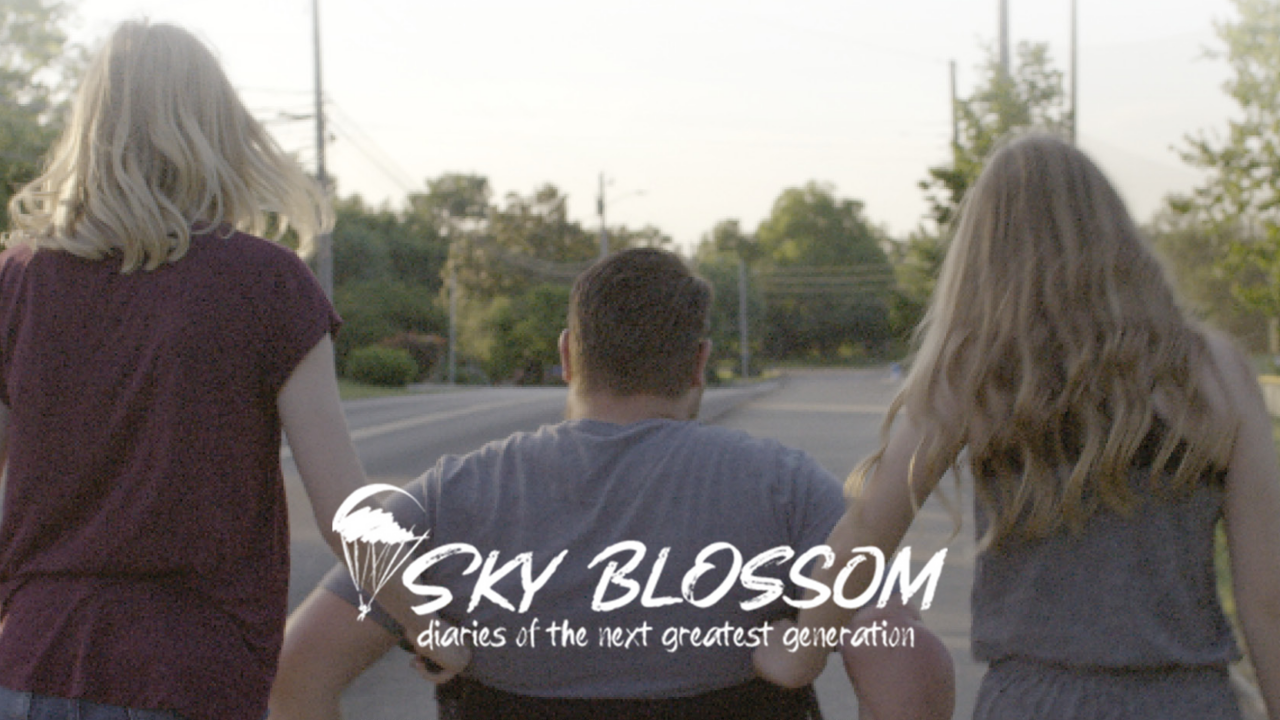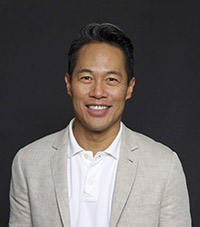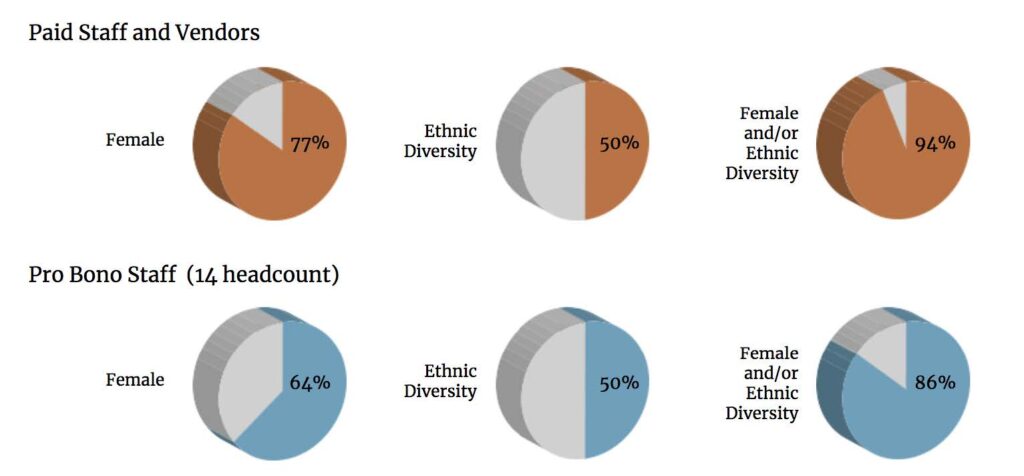
film
SKY BLOSSOM is an inspiring film on today’s students taking care of family with disabilities
across America.


Director & Producer – Richard Lui Richard Lui is a journalist, anchoring at MSNBC and NBC News and has covered many of the network’s major breaking stories, including the Arab Spring, the deaths of Supreme Court Justice Antonin Scalia and Senator John McCain, the Newtown massacre, and more. His breaking news field reporting includes being on the ground for the Paris and San Bernardino ISIS-related terror attacks, and in Ferguson and Baltimore during widespread civil unrest.
Before joining MSNBC, Lui spent five years at CNN Worldwide, anchoring at CNN Headline News. Lui became the first Asian American male in America to anchor a daily national cable network news program in 2007. Lui has received awards for his reporting, including Peabody and Emmy team awards, NEA’s Human and Civil Rights Award, AAJA Suzanne Ahn Civil Rights and Social Justice Award, Champion in Media Award from the Multicultural Media Correspondents Dinner at the National Press Club, Freedom of the Press Award from NAISA Global, and others. Richard is also an AARP Caregiving Champion, Alzheimer’s Association Celebrity Champion, and BrightFocus Foundation Ambassador.
How did this film come about? How did the idea originate? What inspired you?
Seven years ago, my dad was diagnosed with Alzheimer’s. I stepped back from my work as a cable news anchor, changing to work part time on weekends. I started to make a weekly commute from my work in New York and my family in San Francisco. My parents come from military families, and this experience has only brought us closer together. With Sky Blossom, I wanted to show the power of caring for other people. To tell stories of positivity despite pain.
How long did it take to make the film?
I began conceptualizing the film over four years ago. The team filmed each of the five families over three years. We made multiple trips back to each family’s hometown, and kept the same team together for the entire filming process. This allowed us to document how these young teens and twenty-somethings grew up, and grew into their roles as caregivers.
Why did you make this film?
I wanted to show caring for other people is still an honor. One that is worthy of the silver screen, the most difficult of mediums to put a story. Young caregivers are also doing the most difficult, but for family. This next greatest generation deserves all the effort we can muster. I want to put our country’s finest jewelry in the finest of jewelry boxes. So began our push to get this film Oscars qualified and broadcast nationally. To be the first caregiving film shown at the Kennedy Center. We’ve partnered with the Elizabeth Dole Foundation’s Hidden Heroes Program to reach caregivers on the ground, and make this so much bigger than just a movie.
What did you find interesting along the way with your filming journey?
The interviews with each of the families were so honest and raw, unlike anything I’ve seen in my 25-year long career as a journalist. I left each interview inspired by the courage of these teens and 20-somethings. Our country will be in good, caring hands in the coming decades.
Did the film change from your original idea for the film as you were filming or in post?
I couldn’t stop filming and finding more families with amazing young caregivers. I wanted to film them all. In the end we had 10 families we filmed. But we have 90 minutes. I couldn’t pick — they were all my favorites. And continue to be so whether or not they are in the film. But I’ve found a way to make it all work. That announcement will be forthcoming.
What were the challenges in making this film?
The veterans in our film are amazing. But the story of the film was about the children or grandchildren. Editorially the crew, the producers and the editor had to resist telling the stories of the veterans, who are incredibly dynamic and heroic in their own right. The challenge was to ensure that the young caregivers were consistently front and center. We captured the sounds of caregiving – filling prescriptions, squeaking wheelchairs, and wrapping bandages. We added animated scenes to show the heroic things the kids did off-camera. Our composer wrote leitmotifs unique to each child.
What were the successes that you had in making this film?
America is an amazing place with stories of people of different places and different faces. I am glad we were able to show that strength. To bring hope despite difficulty. To embrace difference and find sameness. The ability to be inclusive of all geographies (West, Midwest, South, East, Alaska, and Pacific Islands), in ethnic background, and in gender was an essential objective to making a great film. In front and behind the camera we were able to achieve that. I’m very proud of the team and the caring people that represent $1.5 million in pro bono in-kind commitments over the course of the last four years.
What do you want audiences to take away from this film?
The film is a reason to cheer through unexpected tears. During the time of frontline heroes caring for others and of ethnic divisions caused by not caring for others, this film shows our teens and 20-somethings do care for others, and are not so different despite their backgrounds, but instead beautifully the same. That is what makes America Strong.
Was there something special technically that you utilized in making this film?
I’d have to say it would be the original score and animation. Davy Liu, a former Disney animator who worked on Lion King and Aladdin drew each frame over months of production. It invites us into boundless times and spaces of amazing yet simple acts of caring, moments that our cameras weren’t there to capture. Davy’s work transports us. So does composer Maria Lineva’s original score. From the start, I wanted an original score and orchestra to perform it. My mother would play the piano and violin when we would care for my father who had Alzheimer’s. The classical music she performed brought him back from his dementia. The Berklee College of Music generously lent us their Contemporary Symphony Orchestra for a three-day recording session. Music is a major part of my caregiving experience – I still take mom to the symphony to remember her love of music and my father.
Diversity is important.
Diversity and inclusion remained part of the film’s DNA in front and behind the camera. I wanted to stay true to this both with the families that I chose and my crew.

In-Kind Support.
Half of Sky Blossom’s $3.1 million production was made with in-kind or pro bono contributions by industry professionals, established film contractors, animation groups, and national organizations. These pro bono in-kind commitments represent the broad interest in this film and the unprecedented team that was gathered to produce it. These pro bono commitments make the film different as it goes to market–unlike other independent documentaries, it not only has an installed marketing in-kind budget (estimated at $800K, not included in the $1.5 M), but also has partners that will activate viewers when the film hits the market.
Where do you find inspiration or who/what has influenced you as a filmmaker?
My parents never thought there was a limit to good, hard work. To always try. And fail. And try again. And again. We have produced this film in strange ways, out of the typical process. But there were certain limitations given my daytime job and sick father that meant nothing was going to be typical. I am inspired by the team who believed in the importance of this journey. Who gave of themselves, their time, their brains, and most of all their hearts. This was not easy. But they made it fun. They cared.
Support Provided By
Support for Caregiving is made possible by Otsuka America Pharmaceutical Inc.; OneAmerica Financial Foundation; Comfort Keepers; CareScout Holdings, Inc.; Cherish Health Inc. dba Cherish; Care.com; Evelyn Y. Davis Foundation; Richard King Mellon Foundation; The Arthur Vining Davis Foundations; Ford Foundation; Ralph C. Wilson, Jr. Foundation; NextFifty Initiative (Next50); National Alliance on Mental Illness (NAMI); PATH Foundation; Care for All with Respect and Equity (CARE) Fund; The John A. Hartford Foundation; and the Corporation for Public Broadcasting.
Outreach and Engagement Partners
National outreach and engagement partners for Caregiving include Rosalynn Carter Institute for Caregivers; Grantmakers In Aging; Milken Institute | Future of Aging; Global Coalition on Aging; Elizabeth Dole Foundation; National Partnership for Healthcare and Hospice Innovation; National Minority Health Association; Fred Rogers Productions; Caregiver Action Network; The Coalition to Transform Advanced Care; American Association of Caregiving Youth; Caring Across Generations; SHRM and SHRM Foundation; National Alliance for Caregiving; Lutheran Services in America; Center to Advance Palliative Care; PEOPLE; and Forbes.com.
Caregiving is a Production Of
Lea Pictures and WETA Washington, D.C., in association with Ark Media. For Ark Media, Chris Durrance serves as Director and Senior Producer; Barak Goodman is Series Producer; and Ruth Fertig is Producer. Executive Producers for Lea Pictures are Bradley Cooper and Weston Middleton. Executive Producers for WETA are John F. Wilson and Tom Chiodo. Producer for WETA is Kate Kelly. Production is managed for WETA by Jim Corbley. Consulting Producer is Paul Irving.
WellBeings.org is a health and wellness resource, not a crisis or suicide response website. If you are in crisis, or experiencing thoughts of suicide, please call or text the 988 Suicide & Crisis Lifeline at 988 or the LGBT National Hotline at (888) 843-4564. The service is free and available 24 hours a day, seven days a week.